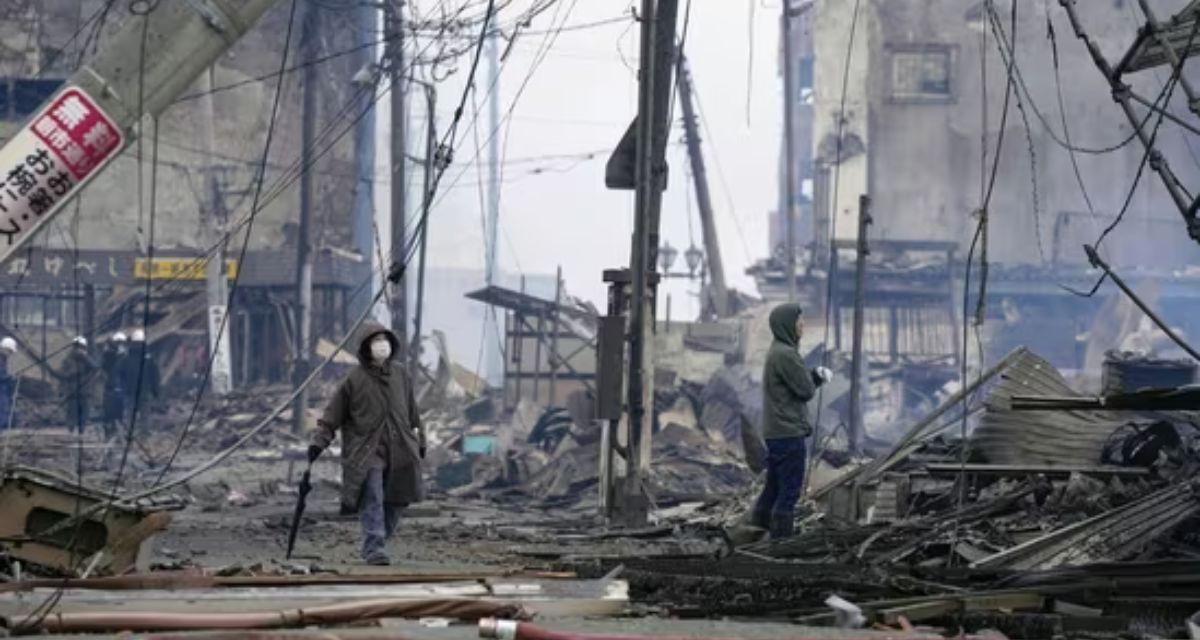As Japan grapples with the aftermath of a devastating series of Japan earthquakes, culminating in a significant 7.5 magnitude quake, the country is in its fourth day of an intense search for survivors. The death toll currently stands at 73, and there is a pressing urgency to find and rescue individuals who remain trapped beneath the debris. This situation referred to as the Japan Earthquake, symbolizes a critical period of challenge and resilience for the nation.
The Noto Peninsula in Ishikawa Prefecture, the epicenter of the disaster, witnessed buildings collapsing and triggered tsunami warnings across regions, extending as far as eastern Russia. Ishikawa Prefecture bears the brunt of the calamity, accounting for all reported fatalities. The catastrophe has forced over 33,000 people to abandon their homes, and approximately 100,000 households are currently without water supply.
Rescue operations are intensifying, with thousands of personnel working amidst challenging conditions marked by freezing temperatures and heavy rainfall. The risk of landslides, spurred by the forecast of more rain, adds a layer of complexity to the already strenuous efforts in the quake-stricken areas.
Three days into the disaster, the full scale of the destruction and the human toll remains murky. Severed transportation routes and the remoteness of the hardest-hit areas have hindered the progress of relief measures in Japan, a nation all too familiar with seismic upheavals.
In a recent statement, Prime Minister Fumio Kishida emphasized the urgency of the situation, highlighting the ongoing efforts to establish sea routes for delivering aid and the progress in reaching remote areas by road. “We are at a critical moment,” Kishida said, acknowledging the desperate need for swift rescue operations.
Ishikawa Governor Hiroshi Hase stressed the importance of health precautions, urging evacuees to use masks and antiseptics to prevent the outbreak of infectious diseases in shelters. The provision of adequate water supplies and sanitary facilities for the displaced remains a top priority.
Japan’s susceptibility to earthquakes is a longstanding challenge, with the nation experiencing numerous seismic events annually, most of which are harmless. However, the memory of the catastrophic 2011 undersea quake of magnitude 9.0, which led to a tsunami and left approximately 18,500 people dead or missing, looms large in the Japanese consciousness.
As the nation confronts this latest ordeal, the world watches with bated breath, hoping for the safe recovery of those still missing and a swift return to normalcy for the thousands affected by this tragedy.
Read More… Vivo X100 Series Launch in India: Features, Price, and Live Stream

